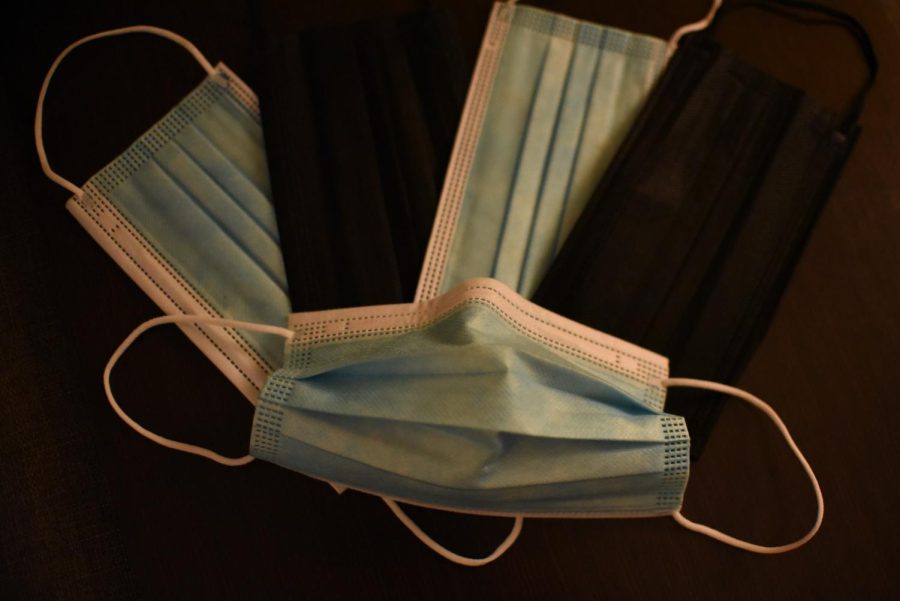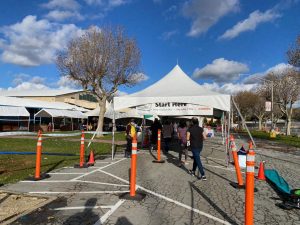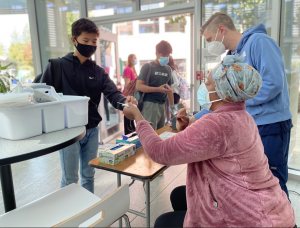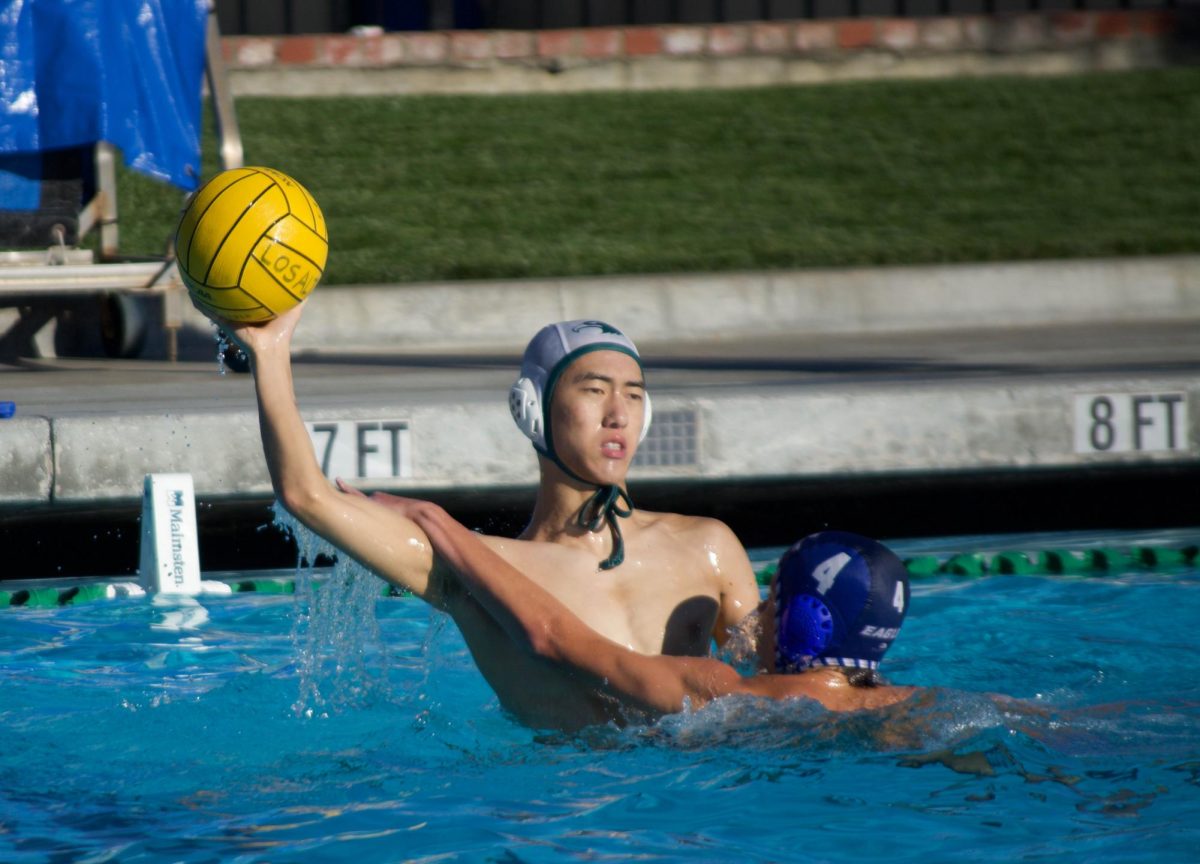Upper school COVID-19 FAQ: Learning format, case numbers and contact tracing
According to the Harker COVID-19 Data Dashboard, 19 students tested positive for COVID-19 from Jan. 2 to Jan. 8. As of yesterday, the upper school is not planning on implementing remote learning for any groups or grades on campus.
January 12, 2022
This article has been updated on Jan. 16, 2022, to reflect current COVID-19 case numbers from the Harker COVID-19 Data Dashboard.
1. How many students and faculty have tested positive for COVID-19 at the upper school?
According to the Harker COVID-19 Data Dashboard, nine students tested positive from Jan. 9 to Jan. 15, and 19 students tested positive from Jan. 2 to Jan. 8. 11 staff members have tested positive so far in January.
49 upper school students and 16 upper school staff members have tested positive since August, according to student COVID-19 cases data updated Jan. 15 and staff COVID-19 cases data updated Jan. 14.
2. Is the upper school planning on implementing remote learning for any groups or grades any time soon?
No, according to Head of School Brian Yager as of yesterday.
3. For what reasons will the upper school consider remote learning?
According to an email sent out to all upper school parents and faculty by Yager on Jan. 3, some classes or grades may need to temporarily transition to remote learning if there is a shortage of staff or teachers quarantining due to COVID-19. The upper school will also return to remote learning if the county requires it, and the upper school aims to allow for an on-site option for Zoom classes in case of remote learning.
When asked about whether the upper school will consider remote learning in the case of overwhelming community input, Yager noted that the school made a clear commitment to in-person learning for this school year.
“Even if there’s a groundswell of desire to go remote, we made the commitment to everybody else,” Yager said. “And so it would get tricky if there was a lot, a lot of people who wanted to be remote, we’d want to listen to the feedback, but ultimately, it’d be hard to make that decision voluntarily, given the commitment we’ve made.”
4. How does upper school contact tracing work?
When a student tests positive, the upper school uses seating charts, sports team rosters and any information provided by the student to determine who is considered a close contact, according to Olson.
The time frame for determining close contacts starts two days before onset of symptoms (or a positive COVID-19 test, if the individual who tests positive is asymptomatic). A student is considered a close contact if they were within six feet for more than 15 minutes of an individual who tests positive within the time frame.
5. When can a student return to in-person classes after testing positive?
In accordance with recently updated Santa Clara County guidance, students who test positive need to isolate for at least five days, not including the day of testing positive or onset of symptoms. After five days of isolation, they may return to school only if their symptoms are gone or resolving and they test negative on a COVID-19 antigen test.
Once an upper school student isolates for ten days, they are allowed to return to school without testing negative. Most people are no longer contagious 10 days after onset of symptoms, according to Harvard Health Publishing of Harvard Medical School.
6. After an individual contracts COVID-19, can they still test positive after 10 days even when they’re no longer contagious?
Yes. According to MIT Medical’s website, people infected with COVID-19 are likely to continue testing positive after the end of the contagious period. This is due to non-dangerous “viral remnants” of COVID-19 that remain in the body.
7. Who can be tested for COVID-19, and how many tests does the upper school have?
According to Olson, testing is available to all students, faculty and staff at any time — if tests are running low, groups like close contacts are given priority for testing, but shortages are “usually not a problem.”
The upper school currently has a “good supply” of tests, according to Olson. The school has unlimited access to polymerase chain reaction (PCR) tests, which detect for COVID-19 genetic material, from Inspire Diagnostics. Rapid antigen tests are stored at the lower school and are distributed to campuses as needed. The PCR tests usually return results about 24-48 hours after testing while the rapid antigen tests take 15 minutes.
8. Have other Bay Area schools returned to remote learning?
Menlo High School moved to remote learning for the week of Jan. 3, according to Menlo’s website. Palo Alto High School has so far remained in-person. As of Jan. 7, Fremont Union High School District has continued in-person instruction. Milpitas Unified School District reversed last Thursday’s decision to return to remote learning until Jan. 18, a reversal that came a day after Santa Clara County called for the continuation of in-person instruction in a video statement last Friday.
9. For how long will class and school meetings take place remotely?
Class and school meetings will take place over Zoom for an indefinite amount of time until further notice, according to upper school senior class dean and English teacher Christopher Hurshman. Meetings are being held virtually in an effort to avoid large gatherings of community members in one place.
10. What does “mild” mean when describing COVID-19 cases?
According to the National Institute of Health, “mild” refers to cases of COVID-19 that display typical symptoms such as fever, cough, loss of smell, nausea and sore throat, but not difficulty breathing or “abnormal chest imaging.” Moderate and severe cases of COVID-19 both involve difficulty breathing.
11. Who is eligible to receive a booster shot?
Individuals 12 years of age or older are eligible to receive their booster shot five months after their second Pfizer or Moderna dose or two months after their one Johnson & Johnson dose, according to Santa Clara County Public Health’s website. To sign up for a booster shot, visit vax.sccgov.org.
Additional reporting by Irene Yuan and Sally Zhu.


















![“[Building nerf blasters] became this outlet of creativity for me that hasn't been matched by anything else. The process [of] making a build complete to your desire is such a painstakingly difficult process, but I've had to learn from [the skills needed from] soldering to proper painting. There's so many different options for everything, if you think about it, it exists. The best part is [that] if it doesn't exist, you can build it yourself," Ishaan Parate said.](https://harkeraquila.com/wp-content/uploads/2022/08/DSC_8149-900x604.jpg)




![“When I came into high school, I was ready to be a follower. But DECA was a game changer for me. It helped me overcome my fear of public speaking, and it's played such a major role in who I've become today. To be able to successfully lead a chapter of 150 students, an officer team and be one of the upperclassmen I once really admired is something I'm [really] proud of,” Anvitha Tummala ('21) said.](https://harkeraquila.com/wp-content/uploads/2021/07/Screen-Shot-2021-07-25-at-9.50.05-AM-900x594.png)







![“I think getting up in the morning and having a sense of purpose [is exciting]. I think without a certain amount of drive, life is kind of obsolete and mundane, and I think having that every single day is what makes each day unique and kind of makes life exciting,” Neymika Jain (12) said.](https://harkeraquila.com/wp-content/uploads/2017/06/Screen-Shot-2017-06-03-at-4.54.16-PM.png)








![“My slogan is ‘slow feet, don’t eat, and I’m hungry.’ You need to run fast to get where you are–you aren't going to get those championships if you aren't fast,” Angel Cervantes (12) said. “I want to do well in school on my tests and in track and win championships for my team. I live by that, [and] I can do that anywhere: in the classroom or on the field.”](https://harkeraquila.com/wp-content/uploads/2018/06/DSC5146-900x601.jpg)
![“[Volleyball has] taught me how to fall correctly, and another thing it taught is that you don’t have to be the best at something to be good at it. If you just hit the ball in a smart way, then it still scores points and you’re good at it. You could be a background player and still make a much bigger impact on the team than you would think,” Anya Gert (’20) said.](https://harkeraquila.com/wp-content/uploads/2020/06/AnnaGert_JinTuan_HoHPhotoEdited-600x900.jpeg)

![“I'm not nearly there yet, but [my confidence has] definitely been getting better since I was pretty shy and timid coming into Harker my freshman year. I know that there's a lot of people that are really confident in what they do, and I really admire them. Everyone's so driven and that has really pushed me to kind of try to find my own place in high school and be more confident,” Alyssa Huang (’20) said.](https://harkeraquila.com/wp-content/uploads/2020/06/AlyssaHuang_EmilyChen_HoHPhoto-900x749.jpeg)















